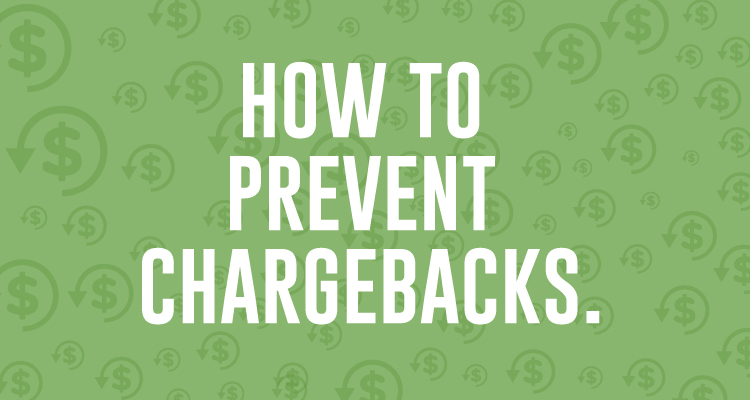If you run a business, then chargebacks aren’t just a nuisance. They’re inevitable and potentially damning, especially for high risk businesses. They operate within a high risk industry or at a higher risk of financial failure, such as eCommerce, financial, or a business with health and safety concerns. Other factors include an excessive amount of chargeback rates, large amounts of refunds and returns, and a history of fraudulent credit card transactions.
When considered high risk, it may be more challenging to secure financing, insurance, and merchant accounts. Even if you do acquire these essential business components, you’ll probably have less then desirable terms and condition like a higher transaction fees. While some things are completely out of your control, you can proactively combat chargebacks.

Table of Contents
ToggleWhat’s a chargeback and how do they work?
A chargeback is the cancellation of a credit card transaction. They are issued after a customer disputes a charge. This can e because they are dissatisfied with your product/service and want a refund. They may also be a victim of fraud and didn’t authorize the charge.
It’s your responsibility to resolve this matter. Even if the customer is refunded in a timely matter, chargebacks can still raise red flags to your processor.
The chargeback process is relatively easy to explain. A cardholder files a chargeback claim with their credit card issuer. The transaction amount is then credited back to the cardholder. You, the merchant, are debited for the amount, as well as a chargeback fee – which is usually around $20 for each claim.
If you lose the chargeback because you were in the wrong, then you could get hit with additional fees and penalties for not complying with regulations.
Those chargebacks fees can add-up if you don’t do your due diligence. A high amount of chargebacks could place you into that dreaded high risk business category.

The best way to fight a chargeback is to prevent it from occurring with these tips and tricks.
Know the most common types of chargebacks.
According to Chargebacks911, there are three sources of chargebacks:
- Merchant error involves an innocent mistake like duplicate billing or charging for the incorrect amount. This makes up 20-40% of all chargebacks. Use a Merchant Compliance Review to detect and eradicate these errors.
- Criminal fraud is where a card number is stolen or hacked and used to make unauthorized charges. Using fraud filters and chargeback alerts could decrease this chargeback source.
- Friendly fraud occurs when a customer goes directly to their bank and asks for a refund instead of going to the merchant. Sometimes the customer doesn’t realize how this impacts the business. In other cases, they knowingly do this in order to commit cyber fraud. Either way, by eliminating merchant and criminal fraud, you can decrease the amount of friendly fraud from taking place from the get-go.
Be upfront and transparent.
“Whether you’re selling physical goods or a SaaS product, make sure you describe every component of your product in full detail,” writes Due’s Renzo Costarella. “If there’s a piece of ‘fine print’ that you don’t want your customers reading, you probably want to rethink your product line. This may seem like an obvious practice, but often times businesses fail to fully disclose information regarding their products.”
Renzo also suggests that you provide images, interactive demos, or free trials. This provides customers with as much info as possible. If your customers are more-informed prior to making a purchase, you have a greater chance of mitigating chargebacks.
Being honest and transparent with your customers also includes clearly informing them about your cancellation policy, return policy, and refund policy. Each policy should cover all cases.
Use a clear merchant name.
The payment name, also known as the payment descriptor, is the name that appears on your customer’s credit card or bank statements.
If you list a name other than the business specific name where the transaction occurred, such as a parent company name, then you’re at a higher risk to receive chargebacks. The customer will question the transaction because they don’t recognize the company name.
If you use a different name for bank or credit card statements, then inform the customer before the transaction to avoid any miscommunication.
Learn how to spot fraud.
If you run a local coffee shop, then you probably have regulars. This means that you actually know them so if they used their spouse’s card this probably wouldn’t alarm you. But, what if you have an online storefront or dealing with a customer for the first-time? That may take some a little extra legwork.
The first place to start is by paying attention to any suspicious details like incorrect credit card security codes or a mismatch between the billing and shipping addresses.
Look out for unusual email addresses or situations where the name and email don’t match. If possible, always verify signatures or require a CVC or CVV2 code on your payment form.
If you notice something suspicious, notify the customer immediately.
Educate your employees.
Training employees in how to deal with card present and card not present transactions is an absolute necessity. After all, you can’t be at your business 24/7! Teaching them to spot suspicious transactions and verify every transaction can help prevent chargebacks from happening.
Closely examine orders from foreign countries that do not ordinarily purchase from you.
There are a large number of fraudulent internet purchases that come from places like Russia and Indonesia as well as developing countries. If you don’t regularly have customers in these regions, then that should raise a red flag.
Provide top-notch customer service.
Customers are more likely to come to you first with any questions complaints, as opposed to their bank, if you provide them top-notch customer service. Have an easy way to contact your business via email address or phone. Make sure that information is easy to find on your website.
Also, respond to them as soon as possible. For example, payment processors send out chargeback notifications so this can trigger your need to contact the customer.
Keep detailed records.
Maintain the records of customers’ credit card transaction dates, amounts, and authorization information. It also helps to keep signed documents like receipts and contracts. All this information can be used to fight a chargeback. You should at least keep these records for 180 days since this is when chargebacks are most likely to occur.
Make refunds easily accessible.
“A refund is very different than a chargeback,” notes Renzo. “While a refund isn’t always positive for your business or it’s cash flow, it is a very good indicator of where you can improve.” Making refunds accessible means that the customer won’t be going to their issuing bank to dispute the charge and it avoids any negative reviews.
Most importantly you can use it as a learning experience so that you don’t make the same mistakes again.
Pick your battles.
Remember, every chargeback comes with a fee and excessive chargebacks can do some serious damage to your business’ credibility with lenders and processors. So, pick your battles wisely and only fight chargebacks that you think that you can win.
Rely on an expert payments partner and find the right processor.
Even if you followed the advice listed above, your business is still susceptible to fraud or chargebacks. That’s why it makes sense to work with an online payments expert or reliable high risk processor who provides guidance and offer features like customer support that handle chargeback specifically.
Recommended merchant service for high risk businesses include Payline Data, Emerchantbroker, Durango Merchant Services, and Soar Payments.
















